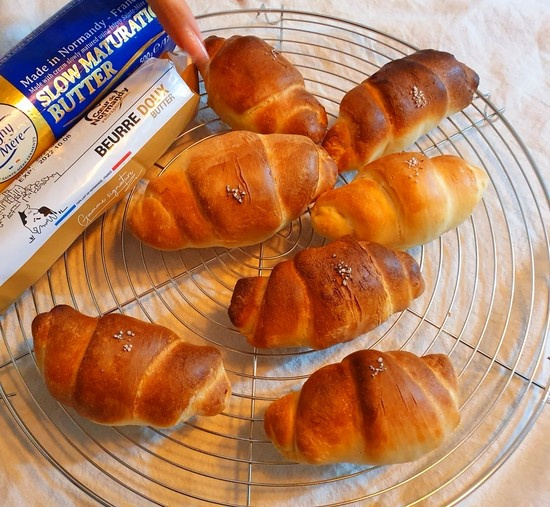
Making salt bread
It's one of the best in Seongsu-dong
I made it with salt bread
French butter is used to make salt butter
I like the soft texture, gravity flour
I'm going to use the strong flour that added the chewy texture
It's fermented
There's a salt mark
It's obviously salt bread
It's fascinating!
It tastes like the one I bought in Seongsu-dong
I can't stop laughing
It's savory
It's soft
Chewy
It's light
It's quite addictive
I think I'll make it a few more times
4 serving
Within 120 minutes

빈티지홀릭
- Ingredients
-
-
unsalted butter20g
-
Gravity powder400g
-
Strong flour200g
-
Water260g
-
Milk100g
-
East8g
-
Salt10g
-
Sugar12g
-
Butter100g
-
Salt2g
-
- Cooking Steps
-
STEP 1/17Add 260g of warm water + 100g of warm milk + 8g of yeast + 10g of salt + 12g of sugar and dissolve
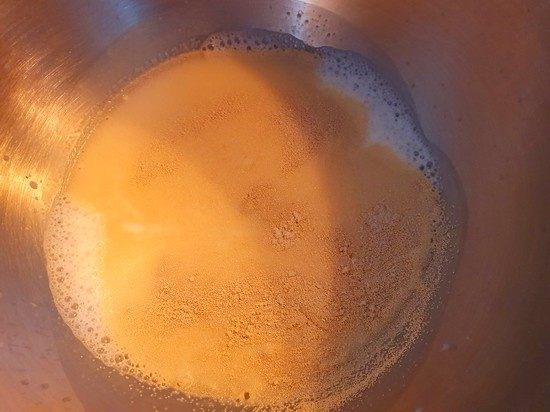 STEP 2/17Melt 20g of salt-free butter and mix it in number , add 400g of gravity and 200g of strong flour, and heat it in a dough or kneader so that no raw powder is visible
STEP 2/17Melt 20g of salt-free butter and mix it in number , add 400g of gravity and 200g of strong flour, and heat it in a dough or kneader so that no raw powder is visible STEP 3/17The dough that is rolled in a kneading machine
STEP 3/17The dough that is rolled in a kneading machine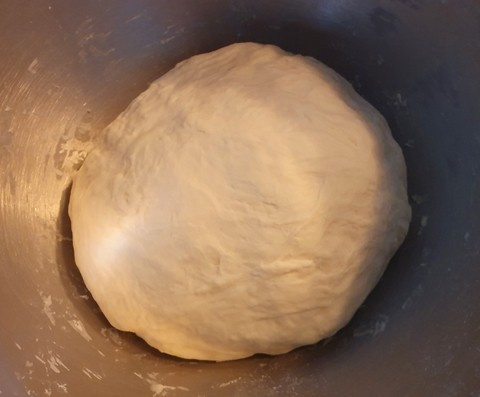 STEP 4/17Ferment at room temperature for 20 minutes (Also a tip to cover it with a cloth, keep it warm in a rice cooker, or keep it in a microwave oven!)
STEP 4/17Ferment at room temperature for 20 minutes (Also a tip to cover it with a cloth, keep it warm in a rice cooker, or keep it in a microwave oven!) STEP 5/17Fermented dough
STEP 5/17Fermented dough
Fold it around 10 times
It activates gluten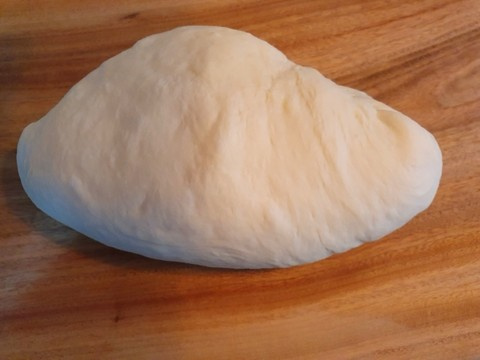 STEP 6/17Ferment again at room temperature for 20 minutes and fold it around 10 times (this is called "non-paste method")
STEP 6/17Ferment again at room temperature for 20 minutes and fold it around 10 times (this is called "non-paste method")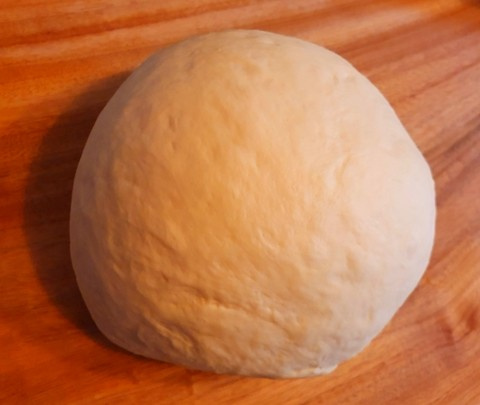 STEP 7/17After fermenting at room temperature for 30 minutes, remove the gas in the dough, divide it into about 65g pieces, and then cover it with a cloth and ferment for 15 minutes
STEP 7/17After fermenting at room temperature for 30 minutes, remove the gas in the dough, divide it into about 65g pieces, and then cover it with a cloth and ferment for 15 minutes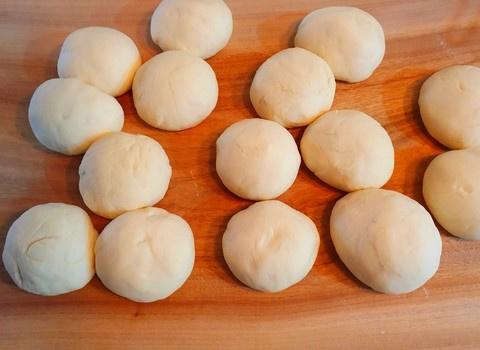 STEP 8/17<Making salted butter>
STEP 8/17<Making salted butter>
1, Mix 100g of soft butter + 2g of salt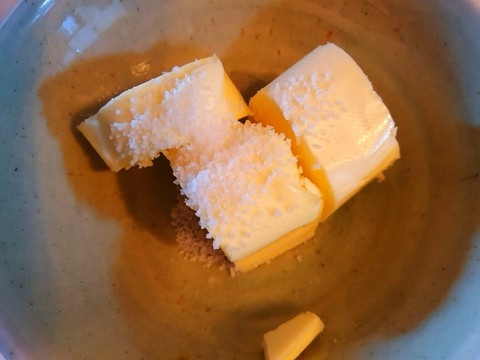 STEP 9/172, Mix it well with a mini whisk
STEP 9/172, Mix it well with a mini whisk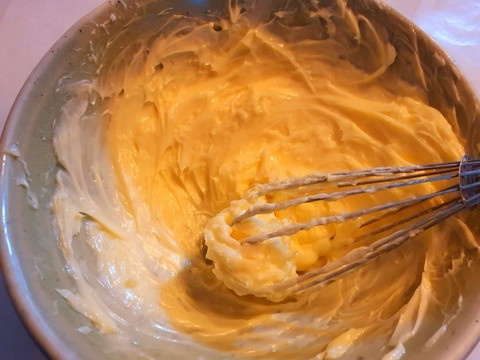 STEP 10/173, Put butter on parchment paper
STEP 10/173, Put butter on parchment paper
Roll it like gimbap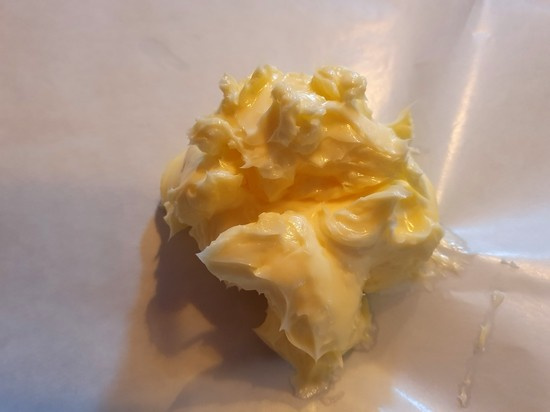 STEP 11/174, To cut and use, make a rod shape and harden in the freezer
STEP 11/174, To cut and use, make a rod shape and harden in the freezer STEP 12/17Roll the dough into a conical shape with a rolling pin and roll it with 8g
STEP 12/17Roll the dough into a conical shape with a rolling pin and roll it with 8g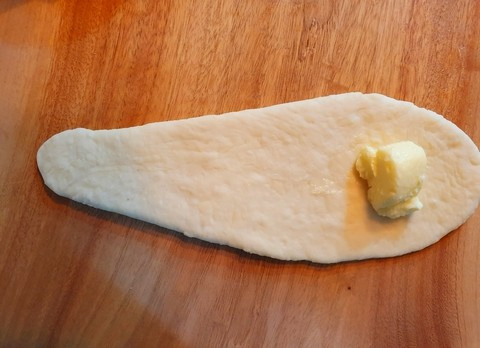 STEP 13/17Roll it like this
STEP 13/17Roll it like this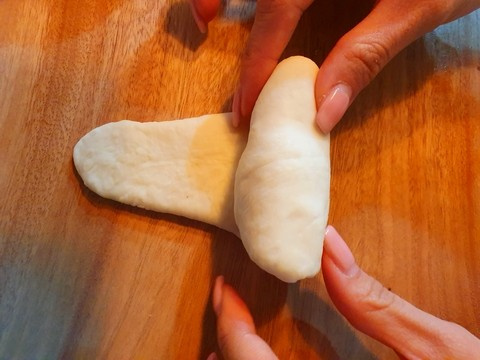 STEP 14/17Panning at intervals on parchment paper
STEP 14/17Panning at intervals on parchment paper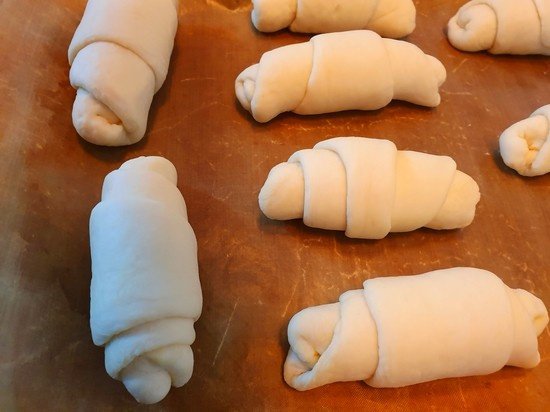 STEP 15/17Brush the dough with milk (the more milk you apply, the prettier it will pop)
STEP 15/17Brush the dough with milk (the more milk you apply, the prettier it will pop)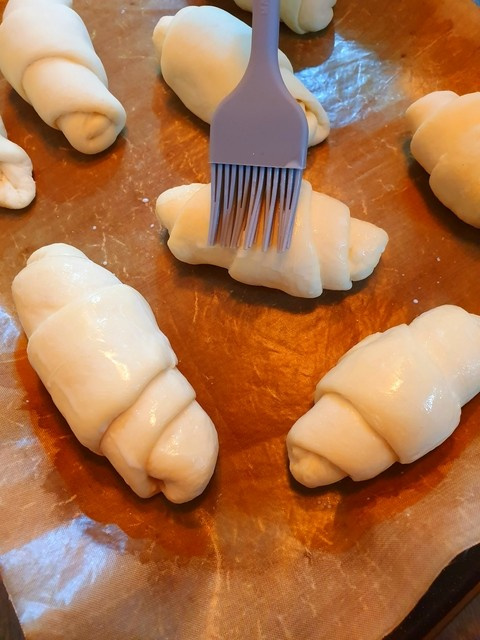 STEP 16/17Lastly, sprinkle some salt
STEP 16/17Lastly, sprinkle some salt STEP 17/17Bake in an oven preheated to 200 for about 13 minutes
STEP 17/17Bake in an oven preheated to 200 for about 13 minutes
Butter is sizzling If you want a crispy texture You can use soft flour (400g) + strong flour (200g)
If you want a crispy texture You can use soft flour (400g) + strong flour (200g)
- Japchae Recommended recipe
-
-
1
 How to make bean sprout japchae4.97(29)
How to make bean sprout japchae4.97(29) -
2
 Meatless japchae. Chives japchae4.93(15)
Meatless japchae. Chives japchae4.93(15) -
3
 [Noodle dish] Spicy. "Kimchi Japchae"4.96(48)
[Noodle dish] Spicy. "Kimchi Japchae"4.96(48) -
4
 If you don't watch it, you'll regret it - super fast japchae gol4.71(28)
If you don't watch it, you'll regret it - super fast japchae gol4.71(28)
-
- Bulgogi Recommended recipe
-
-
1
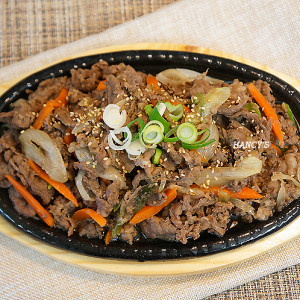 How to make beef bulgogi with your own soup, Jongwon Baek bulgog4.86(21)
How to make beef bulgogi with your own soup, Jongwon Baek bulgog4.86(21) -
2
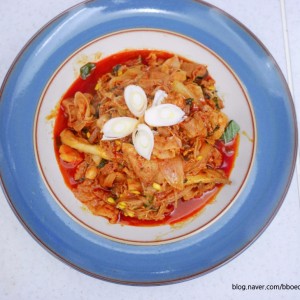 Jongwon Baek Bean sprout bulgogi golden recipe rice thief~4.89(63)
Jongwon Baek Bean sprout bulgogi golden recipe rice thief~4.89(63) -
3
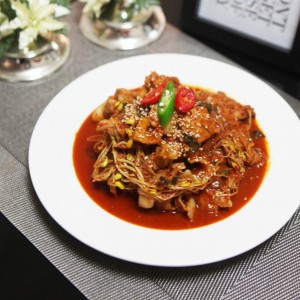 Chef Baek's bean sprout bulgogi4.82(104)
Chef Baek's bean sprout bulgogi4.82(104) -
4
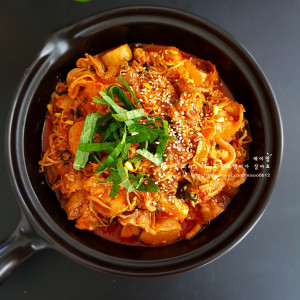 Jongwon Baek Pork Belly Pork Belly Bean Sprout Bulgogi4.96(466)
Jongwon Baek Pork Belly Pork Belly Bean Sprout Bulgogi4.96(466)
-